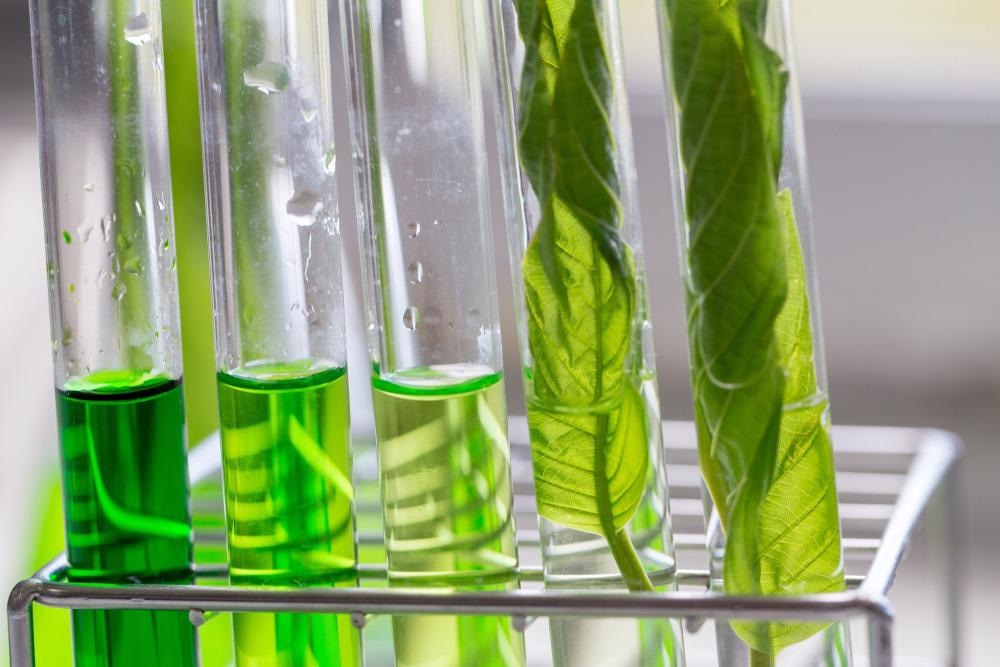Scientists have recently published a review in the Journal of Cleaner Production, on the applications of lignin nanoparticles in the agriculture sector. This review assesses the potential use of lignin biopolymers for the development of nanoparticles for agricultural applications and environmental decontamination.

Study: Lignin nanoparticles: New insights for a sustainable agriculture. Image Credit: Rattiya Thongdumhyu/Shutterstock.com
A circular economy focuses on minimizing the negative impact of waste materials on the environment, society, and economy. It aims to reduce the generation of waste materials as well as develop proper guidance for its sustainable production.
Researchers have pointed out that lignin is the second most abundantly found natural aromatic biopolymer, and its main function is conferring stiffness and mechanical support to a plant. It also protects against harmful pests and pathogens and participates in the transportation of water and nutrients in plants systems.
Synthesis of Lignin Nanoparticles
Recent research has shown that valorization streams for lignin are strongly connected to its distinctive characteristics. For instance, the unique chemical structure of lignin is used in the production of aromatic chemicals. Additionally, it contains polyphenolic rings and a phenylpropane skeleton with hydrophobic functional groups that are associated with its multifunctional trait.
Lignin is obtained as a low-priced byproduct from the biofuel, paper, and cellulose industries. It is also generated from industrialized forestry activities and agricultural practices. Although the annual production of lignin is around $913 million, only a part of it is used in biorefineries. Hence, there is a need to explore more value-added uses of lignin and move the bioeconomy forward.
Scientists have revealed that the development of novel manufacturing routes for lignin nanomaterials promotes a circular economy.
The life cycle assessment (LCA) related research has shown that introduction of lignin in product manufacturing would be beneficial to the environment, in terms of, reduction of carbon footprint and lowing the emission of greenhouse gas.
Lignocellulose is extracted from woody plants, residues, by-products from forestry, and edible and non-edible crops. Lignin nanoparticles are synthesized via different methodologies that include antisolvent precipitation, crosslink-polymerization, pH alteration, mechanical treatment, electrospinning, and CO2 precipitation.
Lignin Nanoformulations and Sustainable Agriculture
Lignin nanoparticles possess many characteristic properties, such as antibacterial and antioxidant, owing to a greater number of surface phenolic moieties and higher thermal stability. Recently, these nanoparticles have been widely applied in agriculture, particularly in the development of nanocarrier systems.
The nano-form of lignin can quench oxyradicals more effectively. Additionally, the presence of phenylpropane monomers in lignin facilitates resistance to oxidation and UV light.
Another important property of lignin nanoparticles is their antimicrobial property, which has been exploited substantially in the agriculture sector. Research has indicated that the application of lignin nanoparticles in combination with essential oils or pesticides significantly enhances the control of pests and diseases. For example, lignin nanoparticles containing cinnamaldehyde, eugenol, or allyl isothiocyanate essential oils have enhanced biological activity against Camellia reticulata Blanco and C. shatangju.
Reports show that lignin-based nanoformulations can encapsulate both hydrophobic and hydrophilic compounds due to their unique properties. Owing to their small size and high negative zeta potential, lignin nanoparticles could enhance the uptake and translocation of substances in plants and also elevate bioavailability.
A previous study has shown that lignin nanoparticles (200–500 nm) can penetrate seedling tissues and seed tegument. This is extremely important as it could enable the delivery of hormones, biocides, and insecticides at an optimal concentration, which would enhance crop yield without polluting the environment with excess usage.
Scientists have also used lignin nanoparticles for nano-priming of maize seeds, which has substantially improved maize seed metabolism and seedling development.
Lignin nanoformulations play a significant role in the transition to renewable and natural biodegradable polymers for increased crop productivity as well as protecting them from harmful pests and pathogens.
An optimal delivery system of nanopesticides and biofertilizers can reduce the total amount of pesticide used. This could alleviate its side effects in the environment and also protect beneficial soil microbes. Lignin nanoparticles can also modulate the release of pesticides in the agricultural field by incorporating enzymatic stimulation into lignin-based nanodelivery systems.
Researchers have also indicated that lignin-based nanomaterials could play an essential role in the remediation of soil pollutants. For instance, sodium lignin sulfonate (SLS), which is a byproduct of the paper industry, has been utilized to develop nano-chlorapatite that can remediate lead-contaminated soil.
Conclusion
The authors showed that lignin plays an important role in sustainable recycling systems. It is used to formulate nanopesticides that reduce the carbon footprint. Additionally, as syntheses of lignin nanoparticles do not involve the use of toxic organic solvents and surfactants, it ensures eco-friendly formulations for agricultural applications.
Scientists believe that the application of lignin nanoparticles will improve the economy circularly and sustainably.
Reference
Pereira, E.S.A. et al. (2022) Lignin nanoparticles: New insights for a sustainable agriculture. Journal of Cleaner Production. 345. 131145. https://www.sciencedirect.com/science/article/pii/S0959652622007776?via%3Dihub
Disclaimer: The views expressed here are those of the author expressed in their private capacity and do not necessarily represent the views of AZoM.com Limited T/A AZoNetwork the owner and operator of this website. This disclaimer forms part of the Terms and conditions of use of this website.